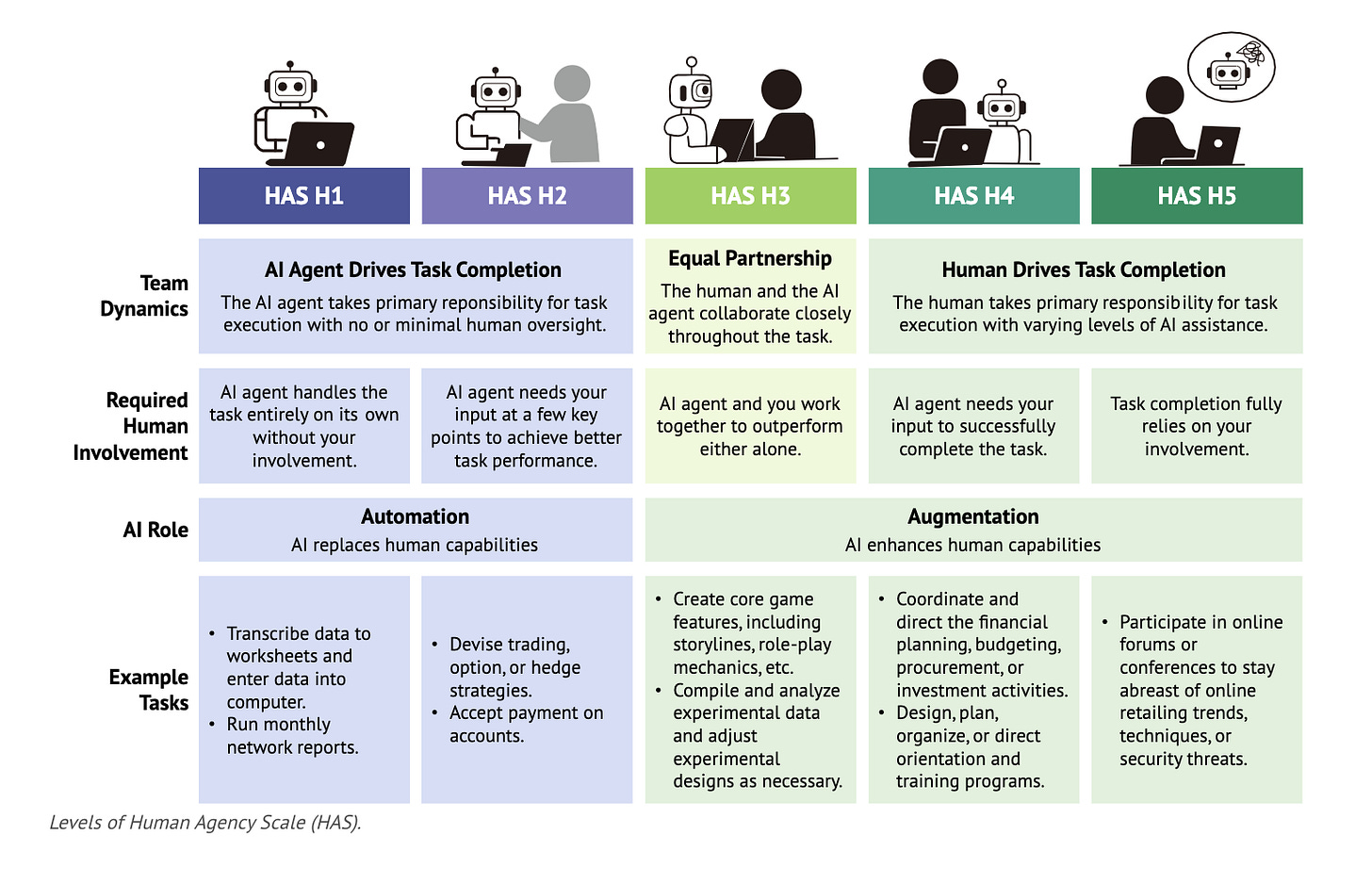The Human Agency Scale: Finding the Right AI Partnership
5 Levels of AI Partnership and the Skills That Will Matter Most
Last week we learned about Stanford's four investment zones—where to spend your AI dollars based on what workers want and what technology can deliver. But knowing which zone your tasks fall into is only half the battle.
The real question is: How much control should humans keep when AI gets involved?
The Human Agency Scale (HAS): Five Levels of Control
Stanford's researchers created something called the Human Agency Scale. Think of it like a sliding scale of control—from AI doing everything to humans staying completely in charge.
Here's how it works:
H1: AI handles everything (full automation)
AI does the entire job with almost no human help.
Example: AI transcribing meeting notes or generating monthly reports
H2: AI leads, Humans Guide
AI does most of the work but asks for your approval at key moments.
Example: AI drafts your emails but waits for you to hit "send"
H3: Equal partnership between human and AI
You and AI work together as equals, each doing what they do best.
Example: AI analyzes market data while you interpret what it means for strategy
The study found that H3 (equal partnership) is the dominant worker-desired level for 45.2% of occupations.
H4: Human leads, AI assists
You're in control, but AI helps make your work faster and better.
Example: AI helps you write a presentation, but you control the story
H5: Human drives , AI support
You make all the decisions. AI just provides information when you ask.
Example: AI gives you research data, but you handle all client conversations and domain expertise
How This Changes Which Skills Get Valued
As organizations start mapping their tasks across these five levels of control- Stanford's research revealed three fundamental shifts that are reshaping the job market.
Information Processing Is Becoming Commoditized
Skills like analyzing data or keeping up with knowledge, which pay well today, will likely need less human input as AI gets better at these tasks. Think of AI handling the heavy lifting of sorting and understanding information while humans focus on interpretation and decision-making. The value shifts from processing information to understanding what it means and what to do about it.
Human Connection Skills Are Appreciating
Skills involving interpersonal communication, team leadership, and resource management are becoming more valuable as AI handles routine tasks. When AI agents can draft emails and schedule meetings, humans can focus on building relationships, managing complex team dynamics, and inspiring others toward shared goals. As our world becomes more digital, purely human skills become more precious.
Complex Judgment Stays Human
While AI excels at processing data instantly, it can't read a room, build trust under pressure, or navigate ethical gray areas. This creates expanding opportunities for humans for nuanced decision-making that requires understanding context, consequences, and human nature.
Key Insight: As AI gets better at handling data and information, the edge comes from the things only humans can do—understanding what the numbers actually mean, building real relationships, and making tough calls when there's no clear answer. The winning companies will deliberately focus their people on these human strengths.
Your Next Step
Instead of asking "What should we automate?" start asking "What level of partnership works best for each task?"
Pick one workflow in your organization. Map each task against the Human Agency Scale:
H1-H2 tasks: Good candidates for automation
H3 tasks: Design collaborative processes
H4-H5 tasks: Build AI assistance tools
Look specifically for tasks where workers express frustration with repetitive work, but the outcome still requires human judgment or relationship management.
The future belongs to companies that make their people more capable, not companies that make them unnecessary.



